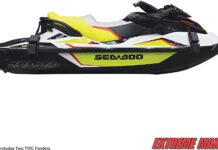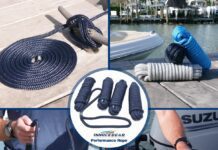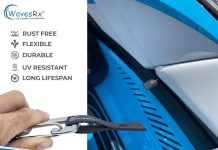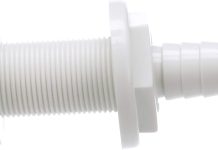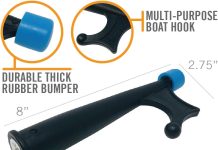When it comes to investing in a dock float, choosing the right one can make all the difference. From stability to durability, there are numerous factors to consider. In this article, we will explore the various types of dock floats available and discuss their unique advantages and disadvantages. Whether you’re a seasoned sailor or a first-time boat owner, this comprehensive guide will help you navigate the world of dock floats and make an informed decision for your waterfront investment. Get ready to set sail on a journey towards finding the best type of dock float for your needs.
Factors to Consider
When choosing the best type of dock float for your needs, there are several important factors that should be taken into consideration. It’s essential to assess the water environment where the dock will be placed, as well as the size and weight requirements. Your budget, the desired durability of the dock, the installation process, and the maintenance involved should also be evaluated. By carefully considering these factors, you can make an informed decision and select the most suitable dock float for your specific needs.
Traditional Foam Dock Floats
Features
Traditional foam dock floats are a popular choice for many reasons. These floats are typically made of expanded polystyrene foam, which provides excellent buoyancy and stability. They come in various sizes and shapes to accommodate different dock configurations. Foam floats are often lightweight, making them easy to install and move when needed. The dense foam material also offers insulation, preventing the dock from becoming uncomfortably hot during sunny days. Additionally, foam floats can be easily cut or shaped to fit unique dock designs.
Pros
One of the significant advantages of traditional foam dock floats is their affordability. They are typically more budget-friendly compared to other types of dock floats. Foam floats also require minimal maintenance, as they are resistant to rot and corrosion. They are also durable and can withstand different weather conditions, including exposure to saltwater. Another benefit is that they provide a stable and secure base for the dock, ensuring safety while walking or moving on it.
Cons
Despite their many advantages, traditional foam dock floats do have some limitations. One of the main drawbacks is their susceptibility to damage from sharp objects or impacts. The foam material can be easily punctured or crushed, causing potential stability issues for the dock. Additionally, foam floats may not be suitable for large docks or those with heavy loads, as they may not be able to provide sufficient buoyancy. It’s also important to note that exposed foam floats can degrade over time when exposed to the sun’s UV rays, potentially shortening their lifespan.
Plastic Dock Floats
Features
Plastic dock floats, often made of high-density polyethylene (HDPE), offer a durable and versatile option for dock construction. These floats are known for their strength, impact resistance, and ability to withstand harsh environments. Plastic floats come in different sizes and shapes and can be customized to fit specific dock requirements. They are also UV resistant, ensuring that they maintain their structural integrity even when exposed to direct sunlight.
Pros
The durability of plastic dock floats makes them an excellent long-term investment. They are resistant to rot, corrosion, and damage from marine organisms, ensuring a longer lifespan compared to other materials. Plastic floats are also relatively low-maintenance, requiring little more than occasional cleaning. They can withstand heavy loads and provide stable support for larger docks or those with extensive use. Additionally, plastic floats are buoyant and can handle fluctuations in water levels without compromising the dock’s stability.
Cons
While plastic dock floats have numerous advantages, there are a few disadvantages to consider. One drawback is their higher cost compared to traditional foam floats. The initial investment may be higher, but the longer lifespan and durability of plastic floats can offset this expense. Additionally, plastic floats can be heavier, making them more challenging to install or move. Care must be taken to ensure proper positioning and anchoring to avoid stability issues. It’s also important to choose a reputable manufacturer to ensure the floats are of high quality and free from defects.
Metal Dock Floats
Features
Metal dock floats are typically constructed using steel or aluminum materials. They offer exceptional strength and stability, making them suitable for heavy-duty applications. Metal floats can be customized to match specific dock dimensions and requirements. They are also resistant to damage from impacts, UV rays, and marine organisms, ensuring a long-lasting and durable dock structure.
Pros
The primary advantage of metal dock floats is their strength and load-bearing capacity. They can support heavy loads, making them ideal for commercial or industrial docks. Metal floats also provide excellent stability, ensuring a secure platform even in rough water conditions. They require minimal maintenance, as they are resistant to rust and corrosion. Additionally, metal floats can be easily attached to the dock frame, simplifying the installation process.
Cons
Despite their many benefits, metal dock floats have a few drawbacks that should be considered. One of the main disadvantages is their higher cost compared to other types of floats. The materials and fabrication processes involved can contribute to a higher price tag. Metal floats are also heavier, which can make installation and relocation more labor-intensive. It’s essential to ensure proper anchoring and adequate structural support when using metal floats to maintain stability. Additionally, the metal surface is prone to temperature fluctuations, potentially making it uncomfortable to walk on during extremely hot or cold weather.
Concrete Dock Floats
Features
Concrete dock floats, also known as pontoon docks, are constructed using reinforced concrete with built-in buoyancy chambers. These floats are designed to provide excellent stability and durability for a wide range of dock applications. They are available in different sizes and shapes and can be customized to fit specific requirements. Concrete floats are resistant to UV rays, impacts, and marine organisms.
Pros
One of the significant advantages of concrete dock floats is their long lifespan. They are highly durable and can withstand harsh weather conditions and heavy loads. Concrete floats offer excellent stability, ensuring a secure and reliable dock platform. They also require minimal maintenance, as they are resistant to rot, corrosion, and pest damage. Another benefit is their resistance to fire, making them suitable for docks in areas prone to wildfires.
Cons
Despite their many advantages, concrete dock floats have a few limitations. One drawback is their weight, which can make installation more labor-intensive. Special equipment may be required to transport and position concrete floats accurately. Another consideration is the higher cost associated with concrete floats, both in terms of materials and installation. Additionally, concrete floats are not easily adjustable or movable, limiting flexibility in dock design or relocation. It’s also essential to ensure proper insulation and sealing to prevent water leakage into the buoyancy chambers.
Modular Dock Floats
Features
Modular dock floats consist of pre-engineered sections that can be assembled to create various dock configurations. These floats are typically made of durable materials such as plastic or metal and offer versatility and convenience. They come in different sizes and shapes and can be easily customized to fit specific dock requirements. Modular floats often feature a modular design, allowing for easy installation, disassembly, and reconfiguration as needed.
Pros
The modular design of these floats makes them highly flexible and adaptable. They can be easily adjusted or expanded to accommodate changing needs or preferences. Modular floats also offer convenience, as they can be disassembled and transported to different locations if desired. They provide stability and functionality, making them suitable for a wide range of water environments and dock sizes. Additionally, modular floats often come with pre-installed features such as cleats or utility connections, further enhancing their functionality.
Cons
While modular dock floats have many advantages, there are a few drawbacks to consider. One limitation is the potential for higher costs compared to traditional foam floats. The modular design and additional features can contribute to a higher price tag. Another consideration is the possibility of reduced durability compared to other types of floats. The connections between modular sections may be less robust than a solid structure, potentially impacting the overall stability of the dock. It’s crucial to choose high-quality modular floats and follow proper installation guidelines to ensure a safe and secure dock platform.
Wooden Dock Floats
Features
Wooden dock floats, often made of treated lumber or hardwood, provide a traditional and visually appealing option. These floats are known for their natural beauty and ability to blend harmoniously with the surrounding environment. Wooden floats can be customized to fit specific dock dimensions and design preferences. They can also be stained or painted to achieve the desired aesthetic.
Pros
One of the significant advantages of wooden dock floats is their aesthetic appeal. They provide a timeless and rustic look that many waterfront property owners desire. Wooden floats are also relatively lightweight compared to some other materials, simplifying the installation process. They can be easily repaired or replaced if damaged, reducing long-term maintenance costs. Additionally, wooden floats offer excellent buoyancy and stability, providing a secure platform for recreational activities or boat mooring.
Cons
Despite their visual appeal, wooden dock floats have a few drawbacks that should be considered. One limitation is their susceptibility to rot, decay, and pest damage. Proper treatment and regular maintenance are essential to prolong their lifespan. Wooden floats may also be less durable compared to other materials, especially when exposed to harsh weather conditions or heavy loads. It’s important to monitor and address any signs of wear or deterioration promptly. Additionally, wooden floats can be more expensive than traditional foam floats, especially when higher-quality lumber or hardwood is used.
Inflatable Dock Floats
Features
Inflatable dock floats provide a unique and portable option for those seeking convenience and ease of use. These floats are typically constructed using durable and puncture-resistant materials such as PVC or reinforced fabric. Inflatable floats can be easily inflated or deflated as needed, allowing for quick installation or storage. They are available in various sizes and shapes and can be customized to fit specific dock requirements.
Pros
The primary advantage of inflatable dock floats is their portability and ease of installation. They can be packed and transported easily, making them convenient for those who frequently move or change dock locations. Inflatable floats are also typically lightweight, simplifying the installation process. They offer excellent buoyancy and stability, ensuring a dependable platform for various water activities. Additionally, inflatable floats are relatively affordable compared to some other types of floats.
Cons
While inflatable dock floats have many benefits, there are a few disadvantages to consider. One limitation is their susceptibility to damage from sharp objects or punctures. Care must be taken during installation and use to avoid potential leaks or instability. Inflatable floats may also require more frequent maintenance, as they need to be periodically inspected for potential damage or air leakage. Additionally, inflatable floats may be less durable than some other materials, especially when exposed to harsh weather conditions or heavy loads.
Dock Floats with Enclosed Foam
Features
Dock floats with enclosed foam combine the advantages of traditional foam floats with additional protection and durability. These floats consist of a foam core encased in a protective shell, typically made of plastic or metal. The foam core provides buoyancy and stability, while the protective shell enhances the floats’ resistance to impacts, UV rays, and other potential damage.
Pros
One of the significant advantages of dock floats with enclosed foam is their enhanced durability. The protective shell prevents the foam core from being easily punctured, crushed, or degraded. These floats can withstand heavy loads, impacts, and harsh weather conditions, ensuring a long-lasting and reliable dock structure. Dock floats with enclosed foam also provide the buoyancy and stability required for recreational activities or boat mooring. They require minimal maintenance, as the foam core is resistant to rot and corrosion.
Cons
Despite their many advantages, there are a few drawbacks to consider with dock floats with enclosed foam. One limitation is their higher cost compared to traditional foam floats. The additional protective shell adds to the overall expense of the floats. Another consideration is the potential increase in weight compared to traditional foam floats, which can make installation and relocation more labor-intensive. Additionally, some protective shells may limit the flexibility of dock design or reconfiguration. It’s crucial to choose a dock float with a suitable shell material and design to ensure optimal performance.
Conclusion
When selecting the best type of dock float, it’s essential to consider the specific factors that are important to your unique situation. The water environment, dock size and weight requirements, budget, desired durability, installation process, and maintenance expectations should all be carefully evaluated. Traditional foam dock floats offer affordability and ease of use, but they may be susceptible to damage and not suitable for heavy loads. Plastic dock floats provide durability and resistance to harsh conditions, but they come with a higher price tag. Metal dock floats offer exceptional strength and stability but can be costly to install and may have temperature limitations. Concrete dock floats provide unmatched durability and resistance to fire but can be heavy and less flexible. Modular dock floats offer versatility and convenience but may have higher costs and reduced durability compared to other types. Wooden dock floats provide visual appeal but may require regular maintenance and be susceptible to rot and pest damage. Inflatable dock floats offer portability and ease of use but may be less durable and require frequent inspections. Dock floats with enclosed foam provide enhanced durability but may come at a higher cost and increased weight. By considering these different types of dock floats and their respective features, pros, and cons, you can make an informed decision and choose the best option for your dock project. Remember, the most suitable dock float will ultimately depend on your unique needs, preferences, and intended use of the dock.


